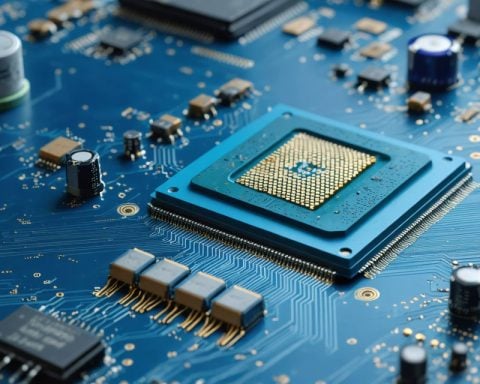Nvidia’s future seems bright yet complex, with recent financial results showcasing striking revenue increases. The tech giant’s remarkable growth trajectory is under scrutiny, however, as some experts caution against unchecked optimism. Just weeks ago, Nvidia reported significant year-over-year revenue growth, yet concerns linger about the sustainability of such rapid advancements.
Poonam Arora, a prominent analyst, expresses reservations regarding Nvidia’s long-term viability. She highlights potential vulnerabilities in the company’s strategy, particularly its premium pricing model and reliance on proprietary technologies such as CUDA. According to Arora, these factors might hinder Nvidia’s ability to fend off competition in the rapidly evolving AI sector.
Arora indicates that major tech companies are preparing to challenge Nvidia’s market position. With the limitations imposed by the concentration of revenue among a few hyperscalers, she foresees a future where demand for Nvidia’s products could diminish significantly. The anticipated shift in the market could lead to declining sales and compressed profit margins for the company.
Despite these warnings, the broader market sentiment appears overwhelmingly positive. Out of 42 analysts recently assessing Nvidia, 39 have assigned a Buy rating, indicating strong confidence in the company’s potential, with an average 12-month price target suggesting considerable upside.
As investors navigate these mixed signals, careful analysis remains critical. Seeking balanced insights can help mitigate risks in this dynamic tech landscape.
Understanding Nvidia’s Market Position Amid Predictions
In addition to the insights provided in the article, it’s essential to consider the following facts and dimensions related to Nvidia’s current standing and future prospects:
Broader Industry Trends: The semiconductor industry is experiencing considerable transformations, primarily driven by advancements in artificial intelligence, machine learning, and data centers. Nvidia is positioned at the forefront of these trends with its innovative GPUs. However, emerging competitors like AMD and Intel are also strengthening their offerings, which could challenge Nvidia’s dominance.
Market Dynamics: Nvidia’s significant engagement with sectors such as gaming, automotive, and cloud computing underscores its diverse revenue streams. The company’s GPU technology is pivotal for a variety of applications, which helps to mitigate risks associated with dependence on a single market. However, if competitors succeed in developing alternative solutions, Nvidia might face challenges in retaining its competitive edge.
Key Challenges and Controversies:
1. Supply Chain Issues: Nvidia, like other tech companies, has faced disruptions in its supply chain, particularly during the pandemic. As global semiconductor shortages continue, managing production while meeting rising demand poses a significant challenge.
2. Regulatory Scrutiny: As Nvidia pursues potential acquisitions to strengthen its market position, it may encounter regulatory hurdles that could limit its growth potential. Concerns over market monopolization and competitive practices are under scrutiny from governmental bodies.
3. Environmental Concerns: The energy consumption of data centers and AI processing raises environmental questions. Nvidia faces pressure to develop more energy-efficient technologies as sustainability becomes a critical focus for many tech companies.
Advantages and Disadvantages:
– Advantages:
– Innovative Technology: Nvidia’s cutting-edge GPU technology remains a benchmark in the industry, making its products highly sought after.
– Diversification: The company’s expansion into multiple technology sectors reduces dependence on any single revenue stream.
– Strong Market Sentiment: The overwhelming buy ratings from analysts suggest robust investor confidence, which can drive stock price performance.
– Disadvantages:
– High Valuation Risks: With strong future growth expectations, Nvidia’s stock may be overvalued, increasing the risk of a significant drop should the company fail to meet aggressive growth targets.
– Intense Competition: The landscape is crowded with contending companies, which can erode market share and pressure profit margins.
– Dependence on Hyperscalers: Reliance on a few large clients for a major part of revenue could pose risks if their demand fluctuates.
Key Questions and Answers:
1. What impact will competitors like AMD and Intel have on Nvidia?
– Increased competition from AMD and Intel could challenge Nvidia’s market share and pricing strategies, forcing Nvidia to innovate continuously.
2. How sustainable is Nvidia’s growth?
– While current growth appears strong, long-term sustainability will depend on Nvidia’s ability to innovate and remain competitive in technology offerings.
3. What are the risks associated with Nvidia’s premium pricing model?
– A premium pricing model can lead to reduced market share if competitors offer similar technology at lower prices, threatening Nvidia’s profitability.
For further reading and exploration of Nvidia and its market position, visit Nvidia’s official website.



















